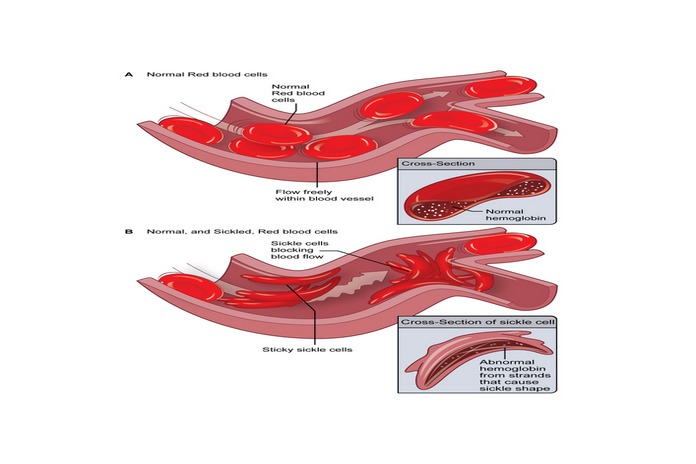Causes Of Sickle Cell Anemia
Sickle cell anemia occurs by a mutation in the gene that tells the body to make the iron-rich compound and makes blood red. Moreover, the gene also enables the red blood cells to carry oxygen from the lungs. In sickle cell anemia, the abnormal hemoglobin allows the red blood cells to become rigid, sticky, or misshapen. However, both mother and father must pass this defective gene for a child to be affected.
It is essential to consider that if only one parent passes the sickle cell gene to the child, it will have the sickle cell trait. However, with one normal hemoglobin gene or one defective form, people with the sickle cell trait make normal hemoglobin and sickle cell hemoglobin.
The blood contains some sickle cells, but they generally don’t have symptoms because they are carriers of the disease that means they can pass the gene to their children. There is a great need to know the complete history of an individual with sickle cell anemia.
Hemoglobin S gene
Sickle cell disease is caused by defects genes known as the mutation in the beta-globin gene that plays an essential role in making hemoglobin. Hemoglobin in red blood cells is responsible for takes up oxygen in the lungs. After that, oxygen is carried through the arteries to all the cells in the tissues of the human body. Red blood cells contain normal hemoglobin that is disc-shaped and flexible so that they move easily through large or small blood vessels to deliver oxygen.
Keep into consideration, and sickle hemoglobin is not like normal hemoglobin because mutations in the gene cause a problem when oxygen levels are lower than normal. A low oxygen level occurs when the hemoglobin has delivered oxygen to the cells in the body’s tissues. With less oxygen, the abnormal hemoglobin S gene causes rigid, nonliquid protein strands within the red blood cell. However, these rigid strands change the cell’s shape by causing the sickled red blood cell that gives the name of the sickle cell.
Sickle-shaped cells are not flexible. So, these cells can stick to vessel walls by causing a blockage that slows and stops blood flow. When the process takes place, oxygen is unable to reach nearby tissues. Moreover, the lack of oxygen in tissues also causes attacks of sudden severe pain named pain crises. These pain attacks occur without warning, and there might be a need to go to the hospital for effective treatment.
Sickle cell anemia condition passed down from parents to children. The disease is recessive, which means both parents must carry the gene for the child to have the condition. In the United States, the condition of sickle cell anemia most commonly affects African Americans. However, other populations commonly affected include those from Africa, the Mediterranean region, Saudi Arabia, India, the Caribbean islands, and Central and South America.

